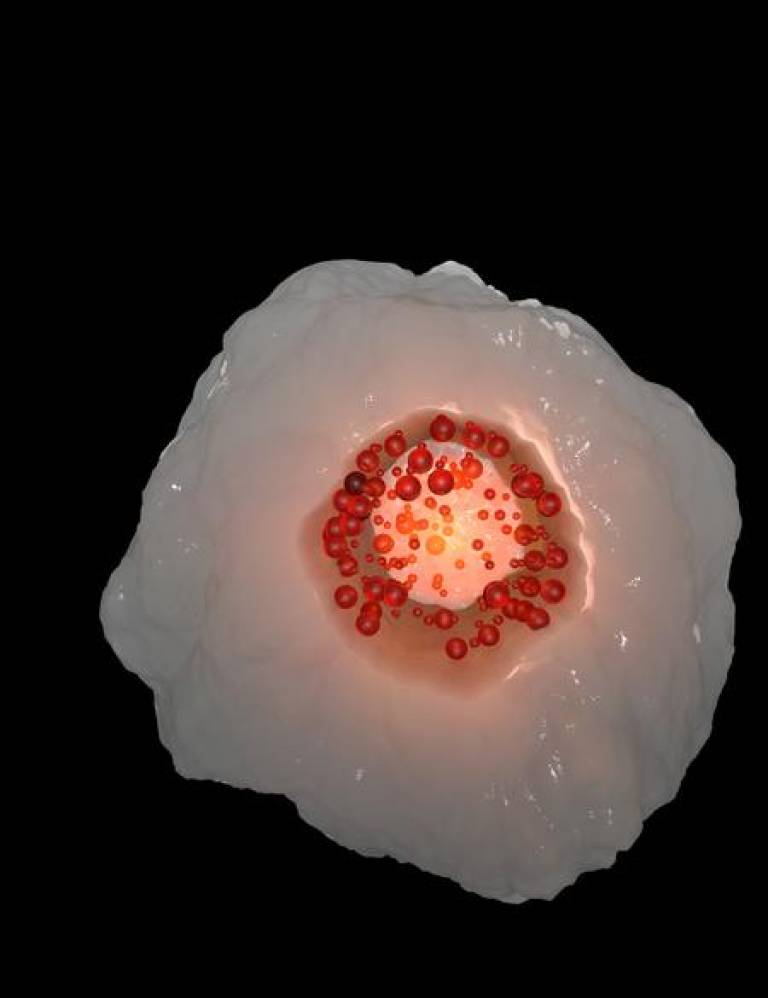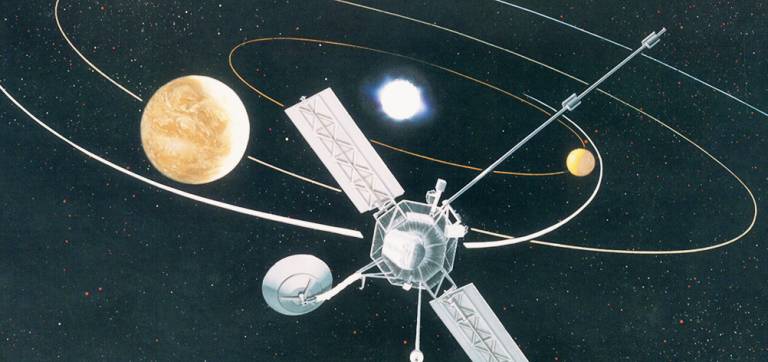Frozen magnetic monopoles create new laboratory physics
21 January 2014

Many of the most interesting things in nature - from spectacular lightning strikes to the subtlety of life itself - are transient, or far-from-equilibrium. To discover the secrets of far from equilibrium states, physicists need simple yet appealing laboratory systems. Now, Prof Steve Bramwell (London Centre for Nanotechnology) has collaborated with workers in Grenoble (France), Cardiff, Oxford and Kitakyushu (Japan), to create just such a system in the magnetic material known as "spin ice".
Spin ice is an unusual magnetic
material that was discovered and named by Bramwell and Mark Harris of ISIS in 1997.
"One of the most unusual aspect of spin ice, discovered recently, is that it contains the magnetic equivalent of electrical charges - so called magnetic monopoles," Bramwell explains. "Spin ice has attracted great interest on account of the currents of these charges forming a magnetic equivalent of electricity or 'magnetricity'".
The number of magnetic monopoles in spin ice diminishes as the temperature goes down in much the same way as does the number of electrical charge carriers in semiconducting materials such as silicon - the basis of the electronics industry. The monopoles or charges disappear at low temperatures by positive and negative charges annihilating each other.
Bramwell used his
experience of spin ice to collaborate with Carley Paulsen and colleagues
from the Louis Néel Laboratory in Grenoble France, who are experts in low
temperature magnetic measurements. The researchers found a trick that used
magnetic fields to create a hot "gas" of magnetic monopoles in very
cold surroundings.
The surroundings then sucked the heat out of the magnetic monopole gas, resulting in many magnetic monopoles trapped at a fraction of a degree above the absolute zero. The frozen monopoles no longer annihilated each other but instead could be made to flow by applying magnetic fields. "Our low temperature experiments will tell us a lot about how magnetic monopoles move, as well as about the physics of far-from equilibrium systems in general," Bramwell concludes.
Notes
- The research appears in a paper entitled "Far-from-equilibrium monopole dynamics in spin ice", by C. Paulsen, M. J. Jackson, E. Lhotel, B. Canals, D. Prabhakaran, K. Matsuhira, S. R. Giblin and S. T. Bramwell, published in the journal Nature Physics
Related links
High-resolution image
Researcher profile
Science contact
Steven Bramwell
London Centre for Nanotechnology
0207 679 9963
s.t.bramwell@ucl.ac.uk
Media contact
Oli Usher
UCL Faculty of Mathematical and Physical Sciences
020 7679 7964
o.usher@ucl.ac.uk
 Close
Close




